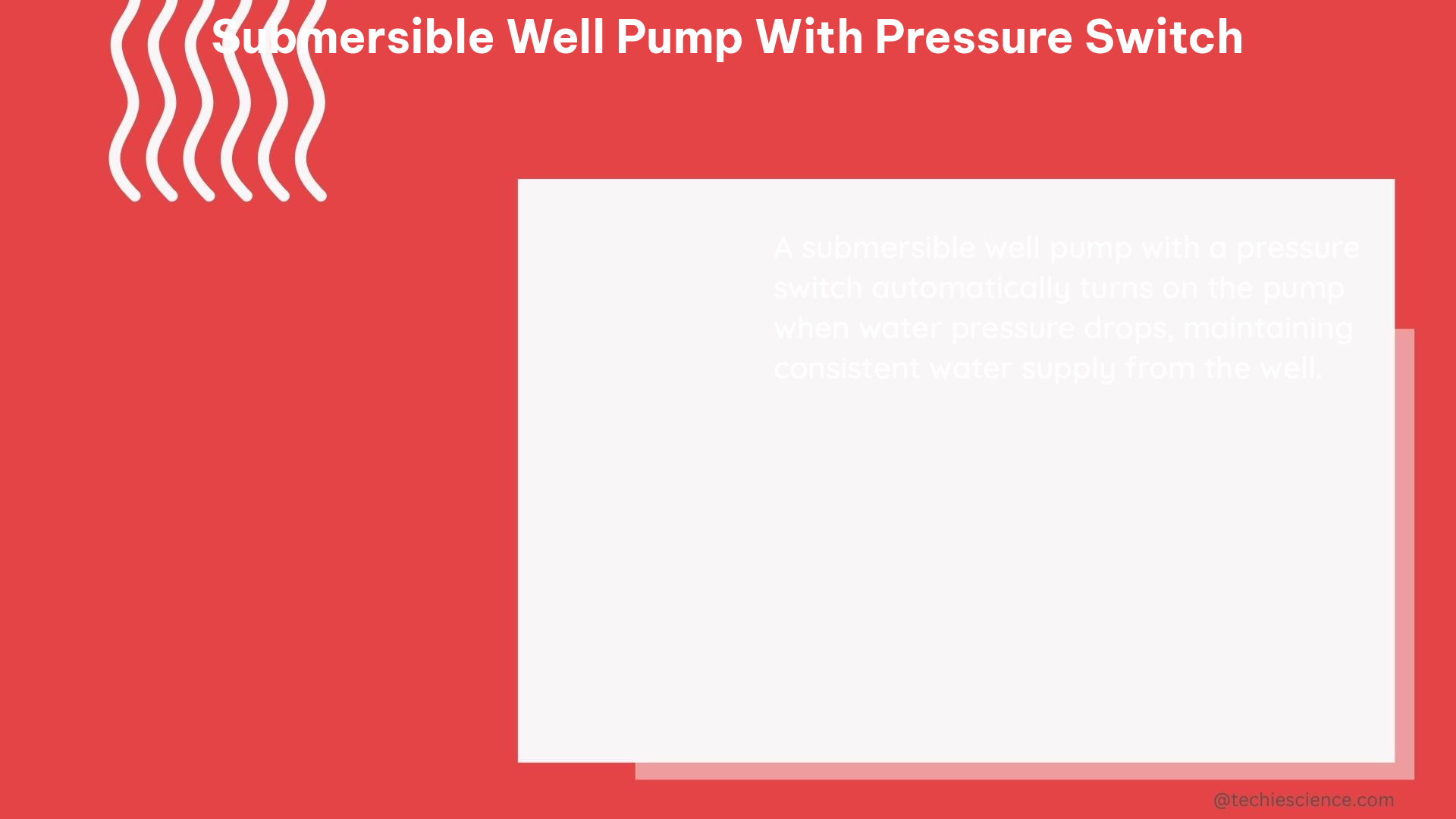A submersible well pump with a pressure switch is a common setup for private water systems, providing automatic operation and a consistent water supply. The pressure switch controls the pump’s operation based on the pressure in the system, turning the pump on when the pressure drops below a certain threshold and off when the pressure reaches a higher set point.
Understanding the Submersible Well Pump and Pressure Switch System
A submersible well pump is a type of water pump that is designed to be submerged in a well, typically at the bottom of the well casing. The pump is connected to a power source, usually an electrical motor, and is responsible for drawing water from the well and delivering it to the water distribution system.
The pressure switch is a critical component of the system, as it monitors the water pressure in the distribution system and controls the operation of the pump. When the water pressure drops below a certain level, the pressure switch will activate the pump, causing it to turn on and replenish the water supply. Conversely, when the water pressure reaches a higher set point, the pressure switch will turn the pump off, preventing the system from becoming over-pressurized.
Monitoring the Well Pump’s Activity

One way to monitor the activity of a well pump is to use an LED bulb connected to the power terminals that power the pump. This setup allows you to visually see if the pump is running or not. To do this, you’ll need to confirm the voltage of your pump (120 or 240 volts) and use a relay or power supply to convert the pump’s voltage to the low-voltage DC needed to power the LED.
Another option is to use a 240-volt pilot light wired across the pump terminals at a remote on-off switch. This will indicate when the pump is running and when power for the pump is on.
Diagnosing and Replacing a Submersible Well Pump
If you need to diagnose and replace a submersible well pump, follow these steps:
- Turn off power to the pressure switch: Ensure that the power to the pressure switch is turned off before proceeding with any work on the system.
- Drain enough water to activate the pressure switch: Lower the water level in the system until the pressure switch turns on the pump.
- Disconnect a black wire from the pressure switch: This will allow you to measure the current draw of the pump.
- Measure the current on the start-up and run using a meter in its 10A setting: This will help you determine if the pump is drawing the expected amount of current, which can indicate potential issues with the pump or the motor.
- Check the check valve: If the pump is working extra hard to move water, it could be due to a faulty check valve. A bad check valve can cause the pump to spin in reverse while it’s off, forcing the motor to work harder to get the water moving in the correct direction. This can lead to overheating and eventual pump failure.
Maintaining the Submersible Well Pump and Pressure Switch System
Regular maintenance is crucial for ensuring the longevity of your submersible well pump and pressure switch system. This includes:
- Checking the pressure switch settings and adjusting them as needed to maintain optimal system performance.
- Inspecting the check valve for any signs of wear or damage, and replacing it if necessary.
- Monitoring the pump’s current draw and comparing it to the manufacturer’s specifications to identify any potential issues.
- Regularly cleaning the well casing and the pump itself to prevent buildup of sediment or debris, which can impair the pump’s performance.
- Ensuring that the electrical connections to the pump and pressure switch are secure and free of corrosion.
By following these maintenance practices and using monitoring systems to track the pump’s activity, you can avoid costly repairs and replacements, and ensure a reliable and consistent water supply for your home or property.
References
- Monitoring Well Pump Activity
- Diagnosing and Replacing a Submersible Well Pump
- Smart Datalogging Well Pump Controller
- Well Pump Troubleshooting
- Simple Well Pump Monitoring Setup

The lambdageeks.com Core SME Team is a group of experienced subject matter experts from diverse scientific and technical fields including Physics, Chemistry, Technology,Electronics & Electrical Engineering, Automotive, Mechanical Engineering. Our team collaborates to create high-quality, well-researched articles on a wide range of science and technology topics for the lambdageeks.com website.
All Our Senior SME are having more than 7 Years of experience in the respective fields . They are either Working Industry Professionals or assocaited With different Universities. Refer Our Authors Page to get to know About our Core SMEs.